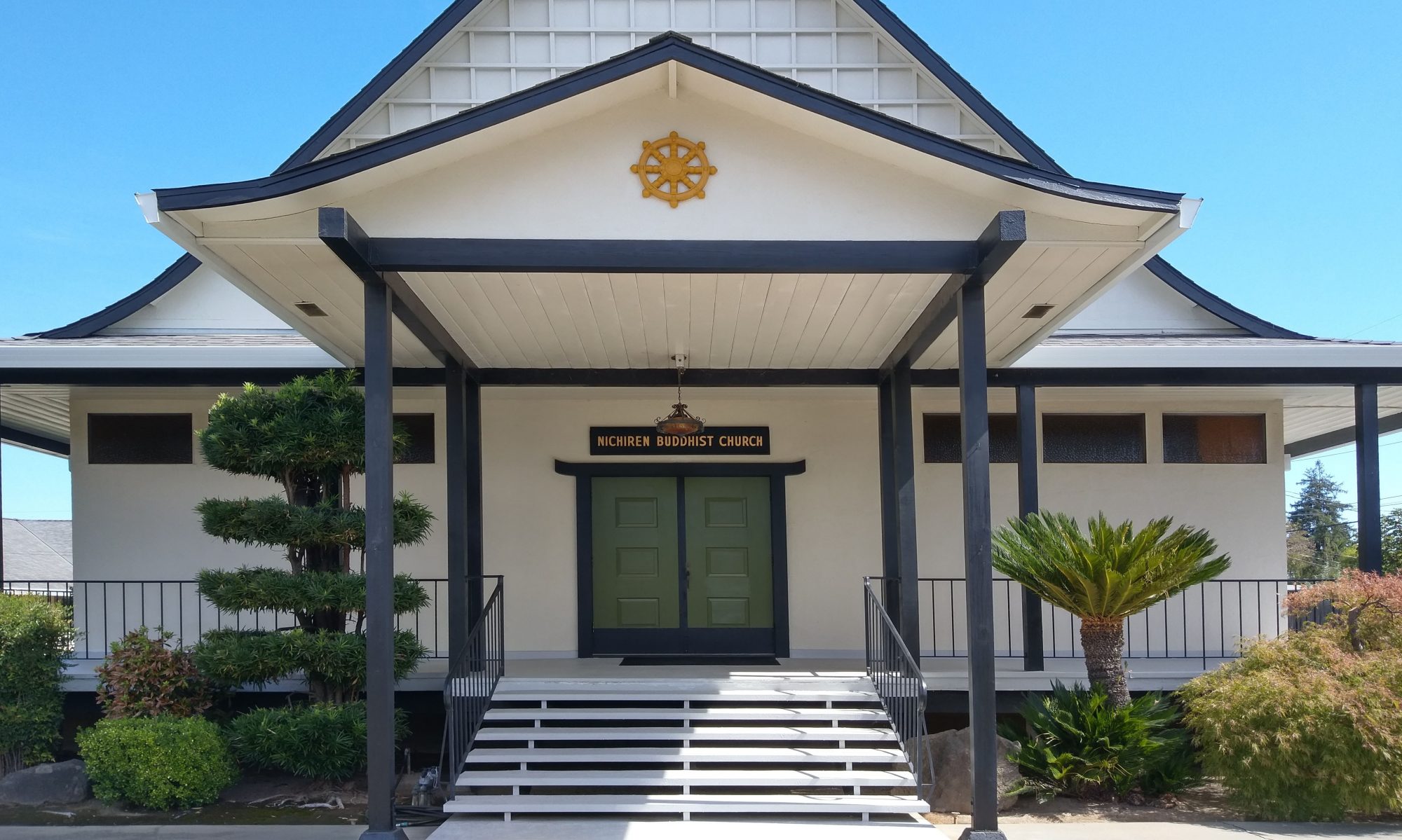
A: The Gohonzon represents the most venerable one in whom we Nichiren Shu Buddhists place faith and show devotion. The Gohonzon represents the Original and Eternal Buddha who attained enlightenment in the remotest past. He is the original Buddha. All other Buddhas in the past, present, and future are his manifestations. The historical Śākyamuni Buddha, born in India 2,500 years ago, is also a manifestation of the Original Buddha. We use the term Original Śākyamuni Buddha to refer to the eternal Buddha, because the enlightenment of the Original Śākyamuni Buddha extends from the remotest past to the distant future without limitation. He has been our great benefactor and teacher leading us to Buddhahood since the remotest past.
Q: What does the word “Gohonzon” mean?
A: Go is an honorific prefix. The two characters which make up the term of Honzon come from several concepts:
- The Most Venerable One whom we respect and rely on as the basis of our practice;
- the Most Venerable One being respected since the remotest past;
- Honorable and eternal aspect of the Most Venerable One.
Taken together then, Honzon means or refers to the Most Venerable One.
Q: How does Nichiren Shōnin represent Gohonzon?
A: As thought of in Nichiren Shū, the Gohonzon represents or is a manifestation of the Eternal Śākyamuni Buddha. Nichiren Shōnin inscribed the Eternal Buddha’s Pure World on a piece of paper for the first time as the Great Mandala. He stated, “I inscribed my life in sumi (black carbon ink).” (Reply to Lord Kyo-oh)
Q: When did Nichiren Shōnin inscribe the Great Mandala?
A: Nichiren Shōnin inscribed the Great Mandala on July 8, 1271 (8th year of Bun’nei) during his exile on Sado Island. It was the first time that the Great Mandala was revealed in the Latter age of Degeneration after two thousands two hundred and twenty some years after the passing of the historical Śākyamuni Buddha. Nichiren Shōnin presented the Great Mandala to his disciples and followers as “a symbol of spreading the Lotus Sūtra.” (“Reply to Nun Nichinyo”)
 Q: What is inscribed on the Great Mandala?
Q: What is inscribed on the Great Mandala?
A: The Great Mandala depicts the world of the Buddha’s enlightenment. It is the form of the Eternal Buddha who has been preaching the Lotus Sūtra tirelessly from the remote past to the present rime, and also into the future. It also shows the Pure Land which is described in the Lotus Sūtra where we receive the merits of the Eternal Buddha Śākyamuni which is the Lotus Sūtra. “Namu Myoho Renge Kyo” is inscribed down the center of the Great Mandala in the calligraphic style. of Nichiren Shōnin. On the left as one is facing the Great Mandala, is “Śākyamuni Butsu (Buddha Śākyamuni),” and on the right is ” Tahō Nyorai (Buddha Many Treasures)”. On the right of Tahō Nyorai, are the names of “Jōgyō (Bodhisattva Superior-Practice)” and “Muhengyō (Bodhisattva Limitless-Practice). On the left of Śākyamuni Butsu, the names of ” Jōgyō (Bodhisattva Pure-Practice)” and “Anryūgyō (Bodhisattva Steadily-Established-Practice)” are inscribed. These are the Four great Bodhisattvas who arose from under the earth and are the leaders of all bodhisattvas. On the four corners of the Great Mandala, The names of the four Heavenly Kings are inscribed, as well as the names of other Buddhas, Bodhisattvas, and protective deities who listen to the Buddha’s preaching.
The Great Mandala also represents the ten realms of Buddhas, Bodhisattvas, pratyekabuddhas, Śrāvakas, heavenly beings, human beings, anger, animals, hungry spirit, and hell, and it shows that every being of the ten realms attains enlightenment.
Q: When I enter a Nichiren Shū temple, I see the Gohonzon enshrined with statues. Why is that?
A: Nichiren Shū temples enshrine statues f Buddhas, Bodhisattvas, and protective deities at the altar in order to provide a more visual representation of the Great Mandala. It is simply a different way of representing the Great Mandala. Wherever the Gohonzon is enshrined, it is a place of the Eternal Buddha’s Pure World and a place to practice.
Q: e Who can receive the Great Mandala (Gohonzon)?
A: A The Great Mandala is very important for Nichiren Buddhists who are able to make a direct connection with the Original Buddha. So receiving the Great Mandala should be approached with reverence. Nichiren Shōnin did not present it to those who were confused in their beliefs or did not have faith in the Lotus Sūtra, even if they had been his supporters or followers. If one wishes to receive the Great Mandala, there is a specific time period and a process which must be completed prior to bestowal of the Great Mandala.
Q: Is there a ceremony to receive the Great Mandala?
A: When one receives the Great Mandala, one becomes a member of Nichiren Shu and participates in the initiation ceremony, indicating a willingness to serve the Three Treasures of Buddha, Dharma (the Lotus Sūtra) and Sangha (community). A minister will perform an eye-opening ceremony for the Great Mandala to consecrate it. For more information, please contact a minister of a Nichiren Buddhist Temple, Church or Sangha near you.

You must be logged in to post a comment.